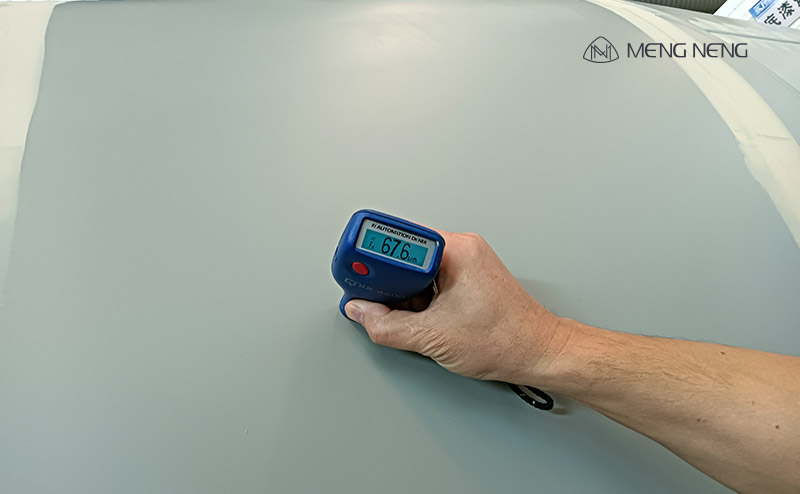How Thick Should Industrial Coatings Be for Long-lasting Corrosion Resistance?
In industrial corrosion protection coating application, the thickness of the coating is a crucial factor that directly impacts the durability of corrosion resistance. The appropriate coating thickness not only effectively prevents the rusting of steel structures, equipment, and other metal surfaces, but also extends their service life. But how thick should the coating be to ensure the desired corrosion resistance over the intended lifespan without rusting?

I. Relationship Between Coating Thickness and Corrosion Resistance
The thickness of industrial corrosion coatings is closely related to their performance. Generally, the thicker the coating, the stronger the corrosion resistance, and the longer the rust prevention effect. However, a thicker coating does not always mean better protection. Excessive thickness may lead to cracking, peeling, and other issues, ultimately affecting the coating’s effectiveness. Therefore, it is essential to select the appropriate coating thickness based on environmental conditions, coating types, and construction standards.
II. Coating Thickness Requirements for Different Environmental Conditions
1. Marine and High-Humidity Areas
For equipment and facilities exposed to marine environments or high humidity, a thicker coating is required. This is because high humidity and salt spray can accelerate oxidation and corrosion of metal surfaces. In such environments, the recommended coating thickness typically ranges from 150-250μm, depending on the type of coating and design standards.
2. High-Temperature, Strong Acid and Alkali Environments
In high-temperature or highly acidic/alkaline environments, the coating must resist not only corrosion but also thermal expansion and chemical reactions. For these conditions, the recommended coating thickness is usually 200μm or more, with particular attention paid to the heat and chemical resistance of the coating material.
3. General Industrial Environments
In general industrial environments, where equipment is not exposed to strong acids, alkalis, or extreme humidity, a typical corrosion-resistant coating thickness is between 100-150μm. This thickness is usually sufficient to ensure long-term corrosion protection without causing the coating to overexpand or peel off.
III. Coating Type and Thickness
Different types of coatings have different thickness requirements. For example, epoxy zinc-rich primers, polyurethane coatings, and high-temperature coatings each have their recommended thickness ranges.
1. Epoxy Zinc-Rich Primer
Due to its excellent corrosion protection, epoxy zinc-rich primer is commonly used in heavy-duty corrosion protection applications, such as steel structures and bridges. The recommended coating thickness for this primer is generally between 80-150μm.
2. Polyurethane Coatings
Polyurethane coatings, known for their excellent weathering and mechanical properties, are suitable for moderate to severe corrosion environments. The typical coating thickness ranges from 120-200μm.
3. High-Temperature Coatings
For high-temperature environments, coatings must provide resistance to high-temperature oxidation and heat. Generally, a coating thickness of 150μm or more is required, with adjustments based on the operational temperature of the environment.
IV. Control of Coating Thickness During Application
Control of coating thickness directly impacts the effectiveness of corrosion resistance. Several methods are commonly used to control coating thickness during application:
1. Multi-Layer Coating
Applying multiple layers of coating can help avoid problems that arise from excessively thick single-layer coatings. By building up the coating in layers, thickness can be gradually increased, ensuring uniform coverage.
2. Use of Thickness Gauges
During the application process, coating thickness gauges can be used to monitor the actual thickness of the coating, ensuring it meets the design specifications.
3. Adjusting Spray Equipment
Proper spray equipment and settings are crucial for controlling the coating thickness. Operators should adjust the equipment based on the type of coating and environmental conditions to achieve the desired result.
V. Conclusion
In industrial coating applications, coating thickness is a key factor in ensuring the expected corrosion resistance and rust prevention. Depending on the environmental conditions and coating types, the optimal thickness typically ranges from 100-250μm. During application, controlling the coating thickness is essential. It is important to follow environmental conditions, coating specifications, and construction standards. By selecting the right coating and controlling the thickness, it is possible to extend the service life of equipment and facilities, ensuring long-term protection without rusting.